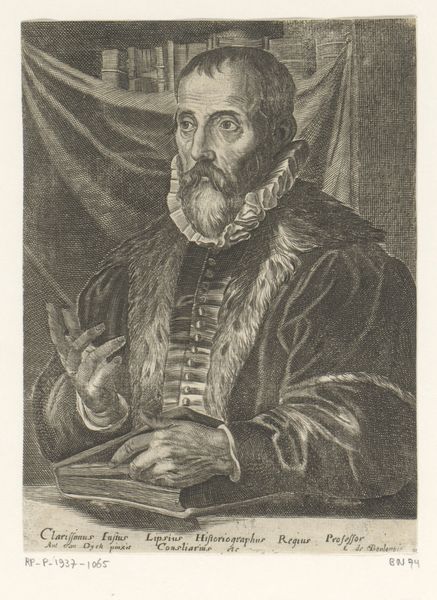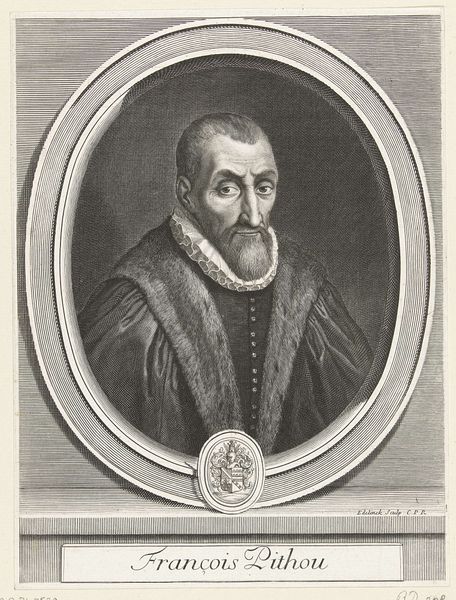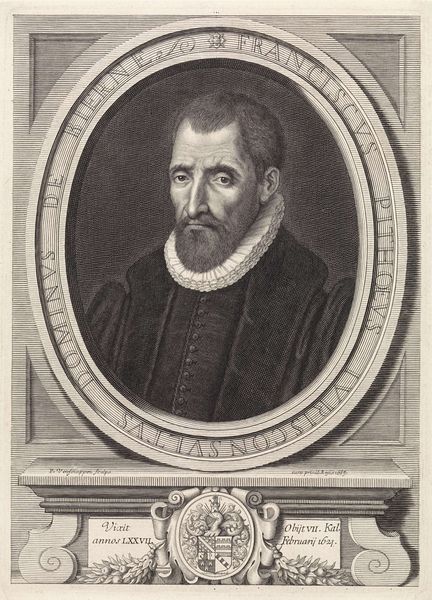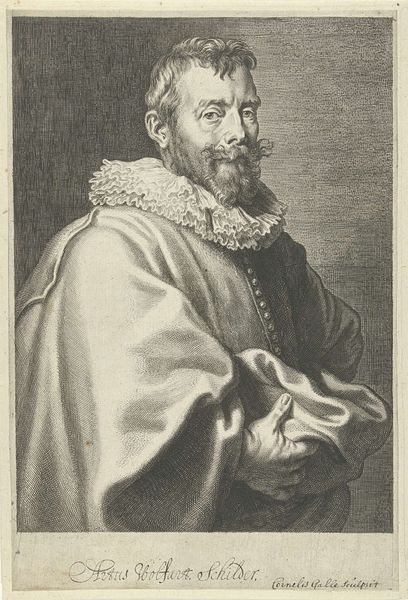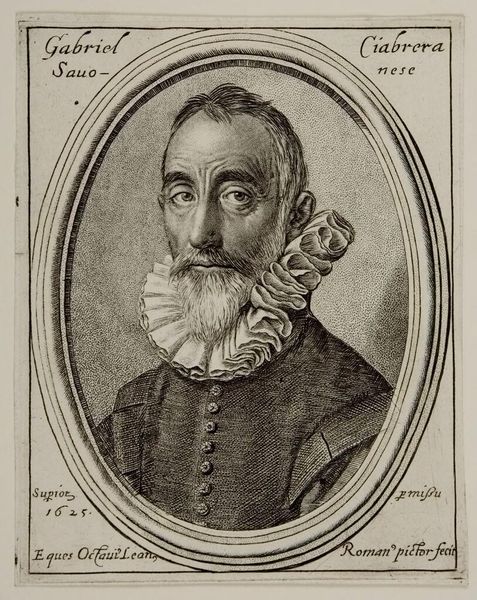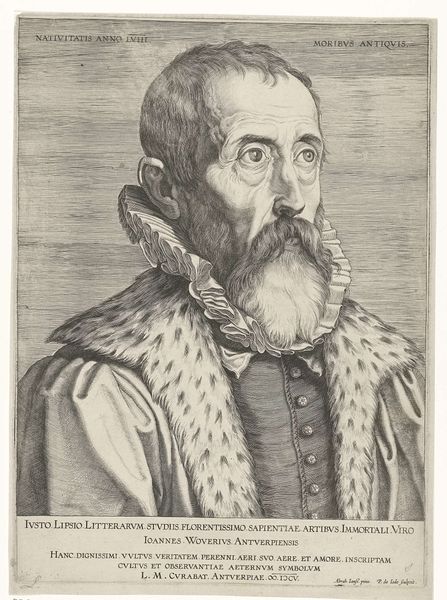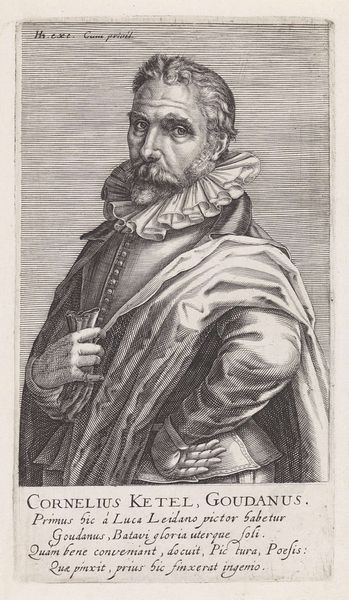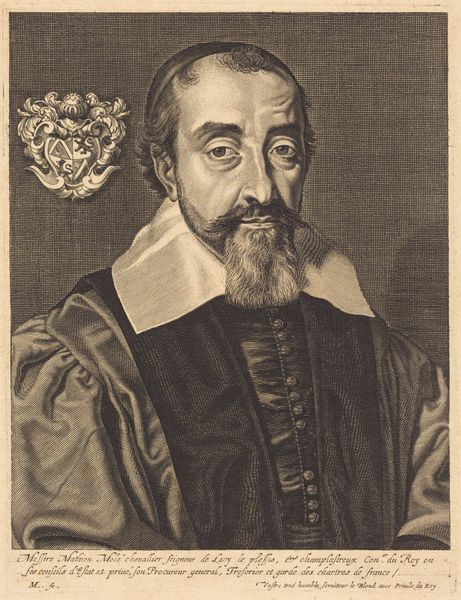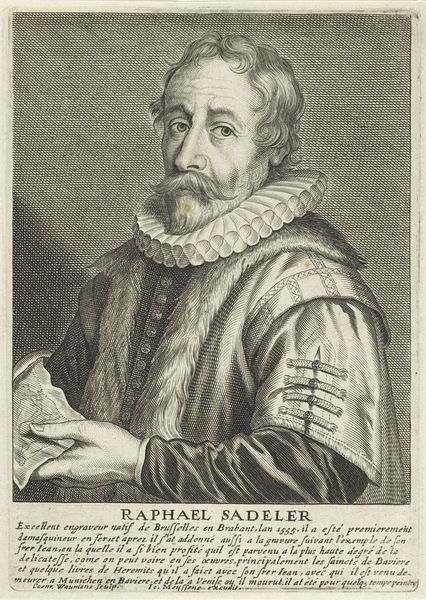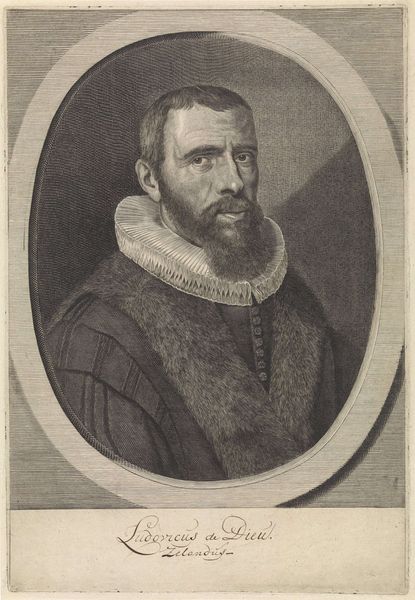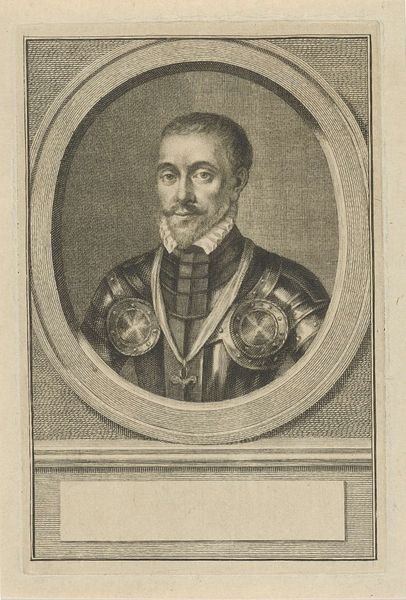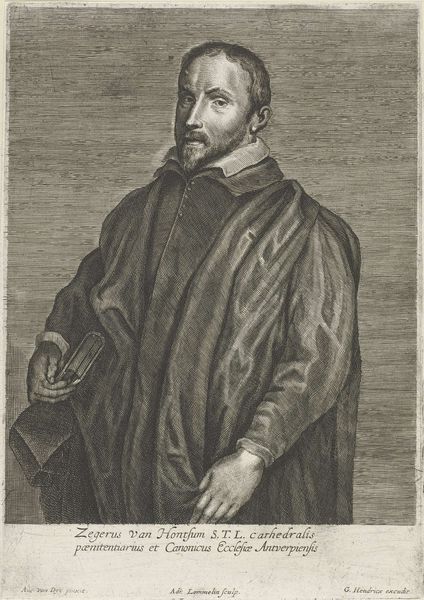
print, engraving
#
portrait
#
baroque
# print
#
engraving
Dimensions: height 271 mm, width 188 mm
Copyright: Rijks Museum: Open Domain
Curator: I find myself drawn into the gaze of "Portret van Justus Lipsius," an engraving created sometime between 1670 and 1713 by Pieter Schenk. Editor: The somber tone hits you immediately, doesn't it? There's a weight in his expression and that dark, enveloping coat. It speaks to a certain formality of the era, almost intimidating. Curator: He's certainly portrayed with great gravitas. Lipsius, after all, was a prominent humanist, known for his revival of Stoicism. Look at how the artist uses symbols to convey his intellectual authority. He’s holding a book, after all, and there is a whole library behind him. Editor: And what about that rather prominent ruff? It nearly obscures him. This elaborate collar could be an explicit marker of status and privilege. The work highlights an emergent academic and intellectual elite with their own distinct codes of dress. Curator: The ruff indeed has that signifying function, but is also connected with purity. Lipsius led a colourful and turbulent life and converted multiple times. He seemed concerned about personal moral purity in the midst of cultural war. That fur coat around his shoulders adds another layer, speaking perhaps to both his wealth and, possibly, his dedication to classical learning. Animal skins had pagan connotations too. Editor: So you are suggesting that this formal and symbolic portrayal reflects the complex, fluctuating politics and philosophies within academic life. Curator: Precisely. Printmaking made such images widely accessible, shaping public perception. We have a lasting symbol of a man and an era. Editor: Reflecting on the piece now, I see the print as a tool in building cultural memory, fixing the legacies of those it portrays. It’s quite an effective piece of visual rhetoric.
Comments
No comments
Be the first to comment and join the conversation on the ultimate creative platform.
